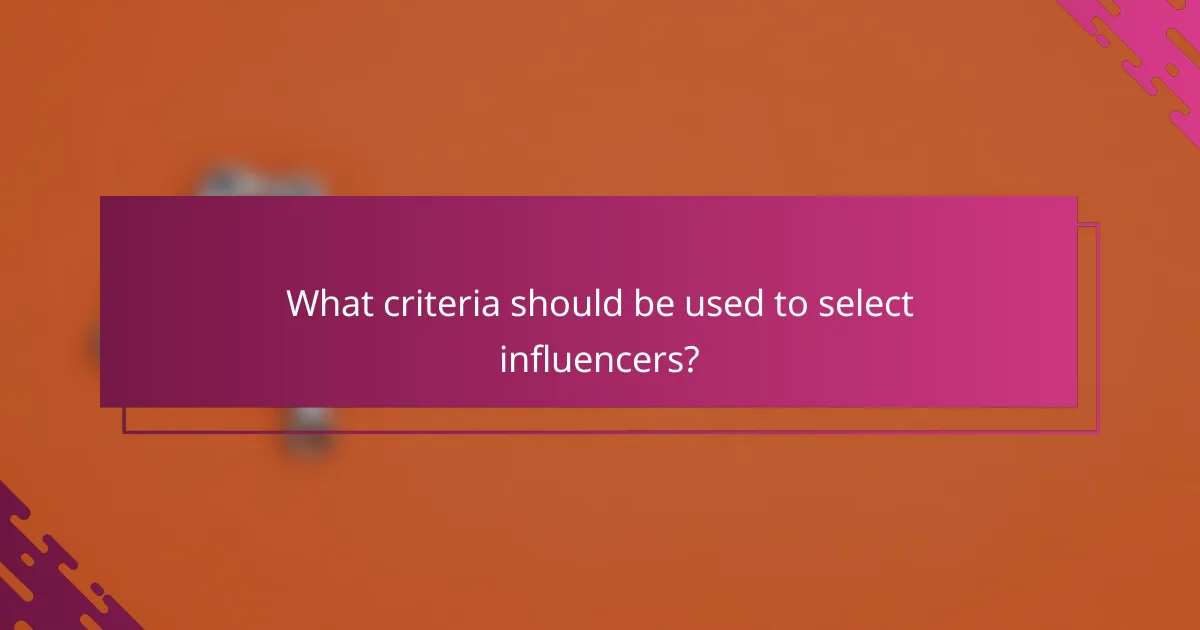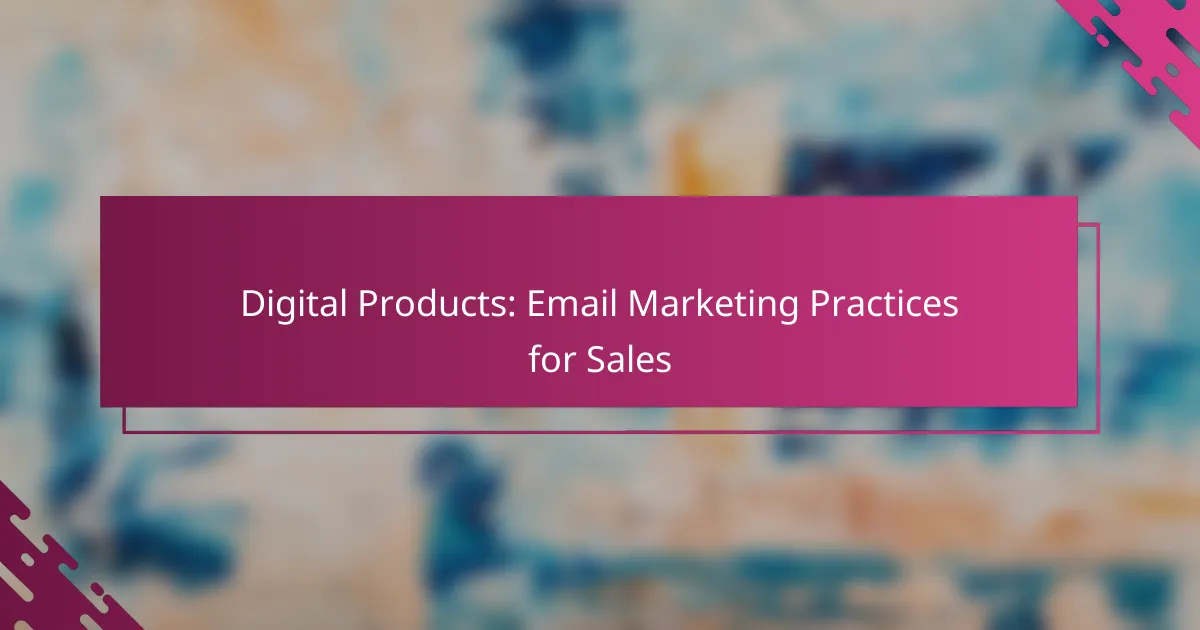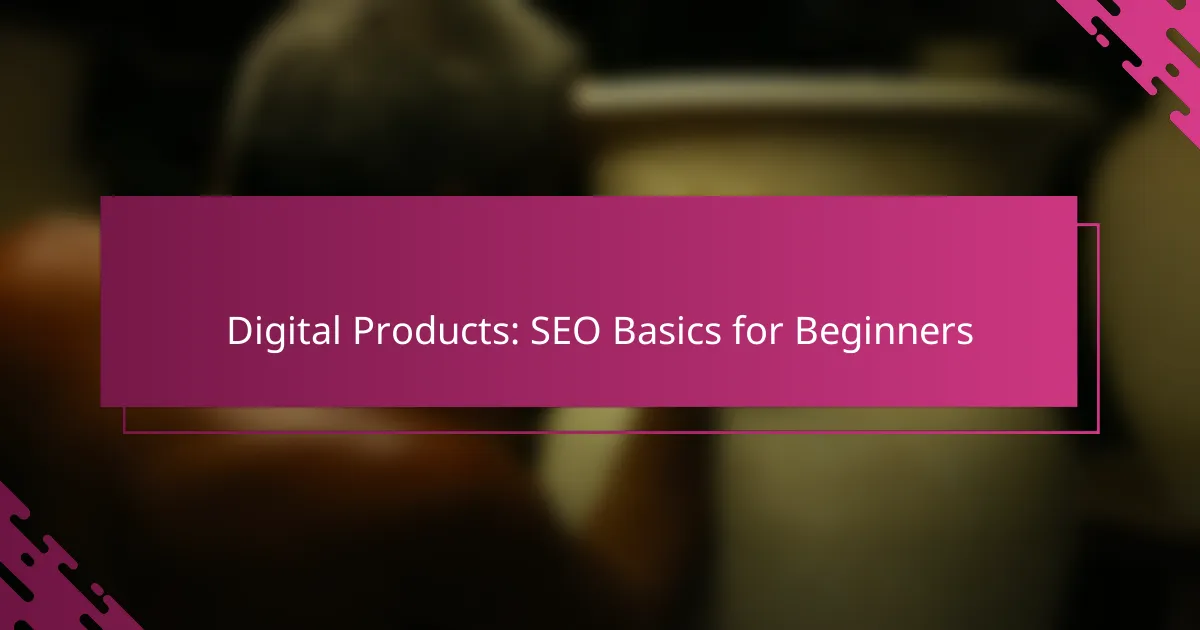Influencer marketing is a powerful tool for boosting sales of digital products by harnessing the reach and trust that influencers have with their audiences. By utilizing strategies such as collaborating with micro-influencers and creating engaging content, brands can enhance visibility and drive conversions through authentic endorsements. Choosing the right platform, whether it’s Instagram, YouTube, or TikTok, is crucial for effectively connecting with target customers.

How can influencer marketing increase sales for digital products?
Influencer marketing can significantly boost sales for digital products by leveraging the reach and credibility of influencers to promote offerings. This strategy taps into their established audiences, driving engagement and conversions through authentic endorsements.
Boosts brand awareness
Influencer marketing enhances brand visibility by placing products in front of a larger audience. When influencers share content featuring digital products, their followers become aware of the brand, which can lead to increased interest and recognition.
Choosing influencers whose audience aligns with your target market is crucial. For example, a fitness app might collaborate with health and wellness influencers to reach potential users effectively.
Enhances customer trust
Influencers often have established relationships with their followers, which fosters trust. When they recommend a digital product, their endorsement acts as a form of social proof, making potential customers more likely to consider the product.
To maximize trust, select influencers who genuinely use and believe in your product. Authenticity in their promotion can significantly impact customer perception and willingness to purchase.
Drives targeted traffic
Influencer marketing can direct highly relevant traffic to your digital product’s website or landing page. Influencers can share personalized links or discount codes, encouraging their audience to visit your site.
Utilizing trackable links can help measure the effectiveness of each influencer’s campaign, allowing for adjustments based on which partnerships yield the best results.
Increases conversion rates
When influencers promote digital products, they often provide exclusive offers or insights that can lead to higher conversion rates. Their recommendations can motivate followers to make a purchase, especially if they feel they are receiving a special deal.
Consider implementing limited-time offers or exclusive content available only through influencer promotions to create urgency and encourage immediate purchases.
Generates user-generated content
Influencer campaigns can inspire followers to create their own content related to your digital products. This user-generated content (UGC) serves as additional marketing material and can enhance community engagement.
Encourage followers to share their experiences with your product on social media by using specific hashtags or running contests. This not only promotes your brand but also builds a sense of community around your offerings.

What are effective strategies for influencer marketing?
Effective strategies for influencer marketing include leveraging micro-influencers, establishing affiliate marketing programs, collaborating on content, and organizing social media takeovers. Each of these approaches can enhance brand visibility and drive sales through authentic connections with target audiences.
Micro-influencer partnerships
Micro-influencers typically have smaller but highly engaged followings, making them ideal for targeted marketing. Brands can partner with these influencers to create authentic endorsements that resonate with niche audiences. Consider collaborating with multiple micro-influencers to maximize reach while maintaining a personal touch.
When selecting micro-influencers, look for those whose values align with your brand and who actively engage with their followers. This ensures that the partnership feels genuine and can lead to higher conversion rates.
Affiliate marketing programs
Affiliate marketing programs incentivize influencers to promote products in exchange for a commission on sales generated through their referrals. This performance-based approach can be cost-effective, as you only pay for results. Set clear commission structures and provide influencers with unique tracking links to monitor their effectiveness.
To enhance your affiliate program, consider offering bonuses for top performers or exclusive discounts for their followers. This can motivate influencers to promote your products more vigorously, increasing overall sales.
Content collaboration
Content collaboration involves working with influencers to create engaging material that showcases your products. This can include blog posts, videos, or social media content that highlights the benefits of your offerings. Collaborating on content allows for creative storytelling that can attract and retain customer interest.
Ensure that the content aligns with both the influencer’s style and your brand message. This synergy will make the content more appealing and authentic to the audience, increasing the likelihood of engagement and sales.
Social media takeovers
Social media takeovers allow influencers to temporarily manage your brand’s social media accounts, providing a fresh perspective and engaging content. This strategy can generate excitement and draw in the influencer’s audience to your brand. Plan the takeover carefully, ensuring that the influencer understands your brand guidelines and objectives.
During a takeover, encourage the influencer to share exclusive promotions or behind-the-scenes content to entice their followers. This can create a sense of urgency and drive traffic to your website, ultimately boosting sales.

What platforms are best for influencer marketing?
The best platforms for influencer marketing depend on the type of product and target audience. Instagram, YouTube, TikTok, and Twitter each offer unique advantages for engaging with potential customers.
Instagram for visual products
Instagram excels for visual products like fashion, beauty, and home decor due to its image-centric nature. Brands can leverage high-quality photos and videos to showcase products in an appealing way.
Consider partnering with influencers who have a strong aesthetic and a follower base that aligns with your target market. Engaging stories and posts can drive traffic to your product pages effectively.
YouTube for tutorials and reviews
YouTube is ideal for products that benefit from demonstrations, such as tech gadgets or beauty items. Influencers can create detailed tutorials or honest reviews, providing potential customers with valuable insights.
Focus on influencers who specialize in your niche and have a loyal audience. This platform allows for longer content, which can lead to deeper engagement and trust-building with viewers.
TikTok for viral campaigns
TikTok is perfect for brands looking to create viral marketing campaigns, especially among younger demographics. Short, entertaining videos can quickly capture attention and encourage shares.
Utilize trending challenges or sounds to increase visibility. Collaborating with TikTok influencers who understand the platform’s dynamics can amplify your reach significantly.
Twitter for real-time engagement
Twitter facilitates real-time engagement and conversation, making it suitable for brands that want to connect with their audience instantly. Influencers can share quick updates, promotions, or customer interactions.
Consider using Twitter for campaigns that require immediate feedback or interaction. Engaging with trending topics or hashtags can enhance visibility and foster community discussions around your brand.

What criteria should be used to select influencers?
Selecting the right influencers is crucial for effective marketing. Key criteria include audience alignment, engagement rates, and content quality, which together ensure that the influencer’s impact resonates with your target market.
Audience alignment
Audience alignment refers to how well an influencer’s followers match your target demographic. When selecting influencers, analyze their audience’s age, gender, interests, and geographic location to ensure compatibility with your product or service.
For example, if you’re marketing a skincare line aimed at young adults, look for influencers whose followers predominantly fall within that age group. Tools like social media analytics can help you assess this alignment effectively.
Engagement rates
Engagement rates measure how actively an influencer’s audience interacts with their content. High engagement rates, typically ranging from 1% to 5%, indicate that followers are interested and likely to respond to promotional messages.
When evaluating influencers, consider not just the number of followers but also likes, shares, and comments. An influencer with a smaller but highly engaged audience can often provide better results than one with a larger, less interactive following.
Content quality
Content quality encompasses the creativity, professionalism, and relevance of an influencer’s posts. High-quality content can enhance your brand’s image and attract more attention from potential customers.
Review the influencer’s previous work to assess their style and messaging. Look for consistency in aesthetics and tone that aligns with your brand. Avoid influencers whose content appears overly promotional or lacks authenticity, as this can deter potential customers.



